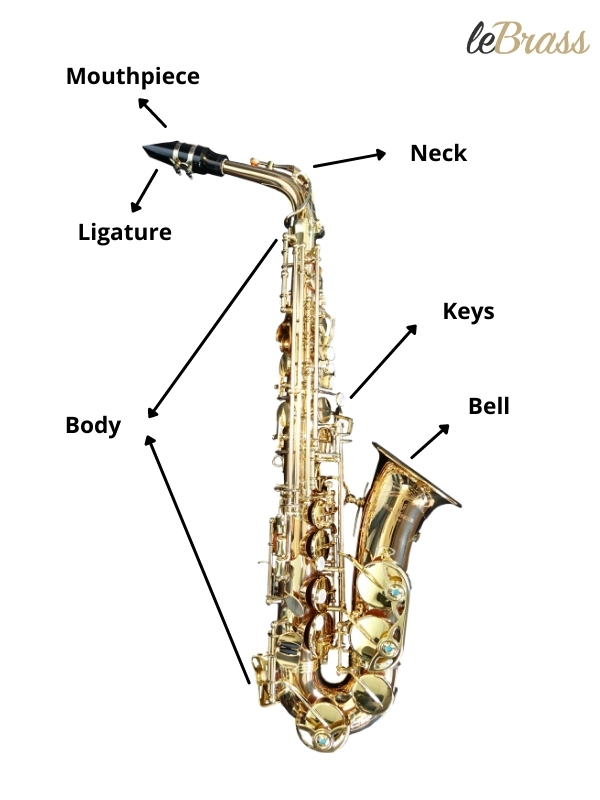The saxophone buying guide
Are you looking for a saxophone but don’t know which model is right for you? Use our saxophone buying guide and find out!
With our buying guide, you can easily suggest saxophones that might suit you. Just choose which pitch you want to play, which finish you prefer and what your budget is and let us suggest the right models for you!
Origin and development of the saxophone
The Belgian instrument maker Adolphe Sax invented the saxophone in 1840. With the saxophone, he wanted to build a wooden bass instrument that also sounded good in the low register. In terms of sound, he was inspired by the clarinet and the oboe. The saxophone was actually intended to enrich classical concert music. However, it has never been able to assert itself there. In jazz, however, the saxophone is very popular because of its flexible sound.
The construction of the saxophone

The saxophone consists of a conical tube made of metal, which is bent at the mouthpiece and at the bell. The only exceptions are the sopranino and soprano saxophones: they are completely straight because they have the smallest tube lengths. The bend makes a long tube length a little more manageable. The mouthpiece is connected to the body via the neck. The neck can have different angles, from almost 90 Degrees to several times bent into an S-shape.
Why is the saxophone a woodwind instrument?
The saxophone produces sound by means of a reed that is set in vibration. This reed is made of wood, which is why the saxophone is a woodwind instrument. However, the metal body makes the saxophone almost as loud as a brass instrument. It is therefore suitable for all kinds of music. The saxophone is particularly prominent in jazz. Like the clarinet, a saxophone is a good beginner’s instrument because it does not require much strength or lung volume to produce its first notes.
Where is the saxophone used?
The saxophone has a special, individual sound and is popular in many musical styles. Each player can develop his or her own sound with his or her own playing technique and choice of mouthpiece and reed. It is therefore particularly popular as a solo instrument in jazz. Due to its warm timbre, it has quickly established itself there.
In wind and jazz orchestras, the saxophone often forms the transition between the woodwinds and the brass. It combines the volume of a brass player with the warm sound of a woodwind player. The saxophone is also still popular in pop music, ska and rock’n’roll. Check out our in-depth article of the world’s most famous saxophone players to learn who uses which saxophone pitch.
Sound production on the saxophone
The saxophone is a single-reed instrument. The sound is produced by a single reed. This reed is made of wood, which is why the saxophone is also a woodwind instrument. A tone is produced when the reed vibrates at the embouchure. This continues to vibrate in the body and can be changed by operating the keys.
Famous saxophone songs
The saxophone is certainly one of the most popular wind instruments – and not only in the orchestra. The saxophone is also frequently used in pop music and provides an unmistakable sound. We have some sound examples for you:




